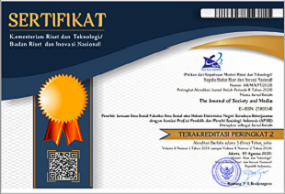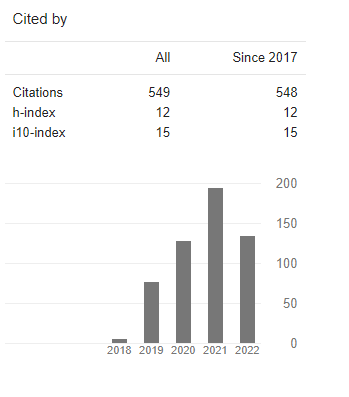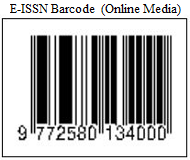Aesthetic Clinic and Beauty Myths in Indonesia: Discourse Analysis of Beauty Representation in Instagram Accounts
DOI:
https://doi.org/10.26740/jsm.v7n2.p514-545Kata Kunci:
aesthetic clinic, beauty myth, beauty representation, cyberfeminism, critical discourseAbstrak
The purpose of this study is to uncover the beauty myths displayed in the Instagram accounts of aesthetic clinics in Indonesia. This study uses a qualitative research method with a critical discourse analysis approach by Sara Mills. Results indicates that; First, the existence of women is shown as an object, where women are victims of symbols and beauty standards that are
reconstructed and reproduced by the subject (the storyteller), namely the Instagram accounts of beauty clinics @dermaster_id, @ertosbeautyclinic, and @natashaskincare. Women as objects shown cannot be separated from the beauty myth. Second, there are two categories of beauty representations formed in the Instagram accounts of beauty clinics @dermaster_id, @ertosbeautyclinic, and @natashaskincare, namely men beauty representations, which consist of smooth faces, young looks, and firm jaws, and women beauty representations consist of; (1) thin cheeks, firm jaw, and firm skin, (2) smooth, acne-free, and attractive skin, (3) glass skin and slim, and (4) halal beauty. The implications of this research are this study is expected to contribute information and enrich the repertoire of social science especially sociology, also for the development of research on sociology of body, feminism study, and sociology of gender and media.
Referensi
Foucault, Michel. 2004. The Archeology of Knowledge. London: Routledge.
Gamble, Sarah. 2010. Pengantar Memahami Feminisme. Yogyakarta: Jalasutra.
Hall, Kira. 1996. CyberFeminism. Vol. 39. edited by Susan C. Herring. Amsterdam/Philadelphia: Spinifex Press.
Mills, Sara. 2011. Gender Matters : Feminist Linguistic Analysis. Equinox Publishing Limited.
Mills, Sara. 2016. Feminist Stylistics.
Prabasmoro, Aquarini Priyatna. 2006. Kajian Budaya Feminis (Tubuh, Sastra, Dan Budaya Pop). Yogyakarta: Jalasutra.
Reed, T. V. 2014. Digitized Lives: Culture, Power, and Social Change in the Internet Era.
Rogers, Mary F. 1996. Barbie Culture Ikon Budaya Konsumerisme. Yogyakarta: Bentang Budaya.
Synnott, Anthony. 1993. The Body Social: Symbolism, Self and Society. London and New York: Routledge.
Synnott, Anthony. 2002. Tubuh Sosial. Simbolisme, Diri, Dan Masyarakat. 1st ed. edited by M. H. Abid. Yogyakarta: Jalasutra.
Walby, Sylvia. 1987. Patriarchy at Work : Patriarchal and Capitalist Relations in Employment. University of Minnesota Press.
Walby, Sylvia. 1991. Theorizing Patriarchy. B. Blackwell.
Walby, Sylvia. 1997. Gender Transformations. Routledge.
Walby, Sylvia. 2009. Globalization and Inequalities : Complexity and Contested Modernities. SAGE Publications.
Walby, Sylvia. 2011. The Future of Feminism. Polity Press.
Wolf, Naomi. 2002. The Beauty Myth: How Images of Beauty Are Used Against Women. New York: Harper Collins Publisher.
Unduhan
Diterbitkan
Cara Mengutip
Terbitan
Bagian
Lisensi
Hak Cipta (c) 2023 The Journal of Society and Media

Artikel ini berlisensi Creative Commons Attribution 4.0 International License.
 Abstract views: 896
,
Abstract views: 896
, PDF Downloads: 454
PDF Downloads: 454












